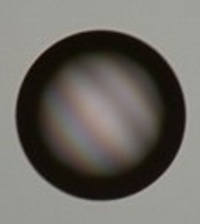Arrays of high-finesse open-access microcavities on chips
There is currently great interest in the implementation of micro-scale, high-Q Fabry-Perot cavities, especially for applications in sensing and cavity quantum electrodynamics (cavity QED). Compared to other types of microcavities, the open-access nature of the air-core Fabry-Perot cavity provides important advantages, such as access to the high-field regions of the mode (for analytes, atomic emitters, etc.) and an inherent spectral tuning ability (through adjustment of the mirror spacing). Most research in this area employs micro-machined curved mirrors fabricated by etching, laser ablation, or focused ion beam milling, with cavities formed from pairs of mirrors aligned by piezo-based positioners.

We are studying a uniquely monolithic approach, based on the controlled formation of delamination buckles within a thin film multilayer stack. This technique allows us to fabricate dense arrays of self-aligned, stable high-Q microcavities on a single chip. Recently, we have achieved mode volumes on the order of a single cubic wavelength combined with Q exceeding 103. This corresponds to Purcell enhancement factors exceeding 100, which we expect to improve by the use of higher reflectance mirrors in future work. These cavities can be thermally tuned, and can be intersected by waveguide channels in order to provide access to the cavity. In addition to ongoing optimization of cavity parameters, we are currently pursuing three main routes towards functionalization:
- Microfluidic 'plumbing' interfaces to our chips are under development, and will be used to explore applications in lab-on-a-chip (LOC) sensing, and gas-phase cavity QED
- We are exploring the monolithic integration of solid-state 'atomic' emitters, including defect centers in diamond and semiconductor quantum dots. We hope to explore novel light sources and other elements of interest for quantum information networks.
- Monolithic integration of optomechanical elements, such as silicon nitride membranes, is under development. We aim to explore important applications of cavity optomechanics, such as the 'quantum transducer' needed to swap entanglement between the microwave and optical regimes.

References
- C. A. Potts, A. Melnyk, H. Ramp, M. H. Bitarafan, D. Vick, L. J. Leblanc, J. P. Davis, and R. G. DeCorby, "Tunable open-access microcavities for on-chip cavity quantum electrodynamics," Appl. Phys. Lett. 108, 041103 (2016).
https://doi.org/10.1063/1.4940715
arXiv:1701.03093 - M .H. Bitarafan, H. Ramp, C. Potts, T. W. Allen, J. P. Davis, and R. G. DeCorby, "Bistability in buckled dome microcavities," Opt. Lett. 40, 5375-5378 (2015).
https://doi.org/10.1364/OL.40.005375 - M. H. Bitarafan, H. Ramp, T. W. Allen, C. Potts, X. Rojas, A. J. R. MacDonald, J. P. Davis, and R. G.DeCorby, "Thermomechanical characterization of on-chip buckled dome Fabry-Perotmicrocavities," J. Opt. Soc. Am. B 32, 1214-1220 (2015).
https://doi.org/10.1364/JOSAB.32.001214
arXiv:1510.07766


